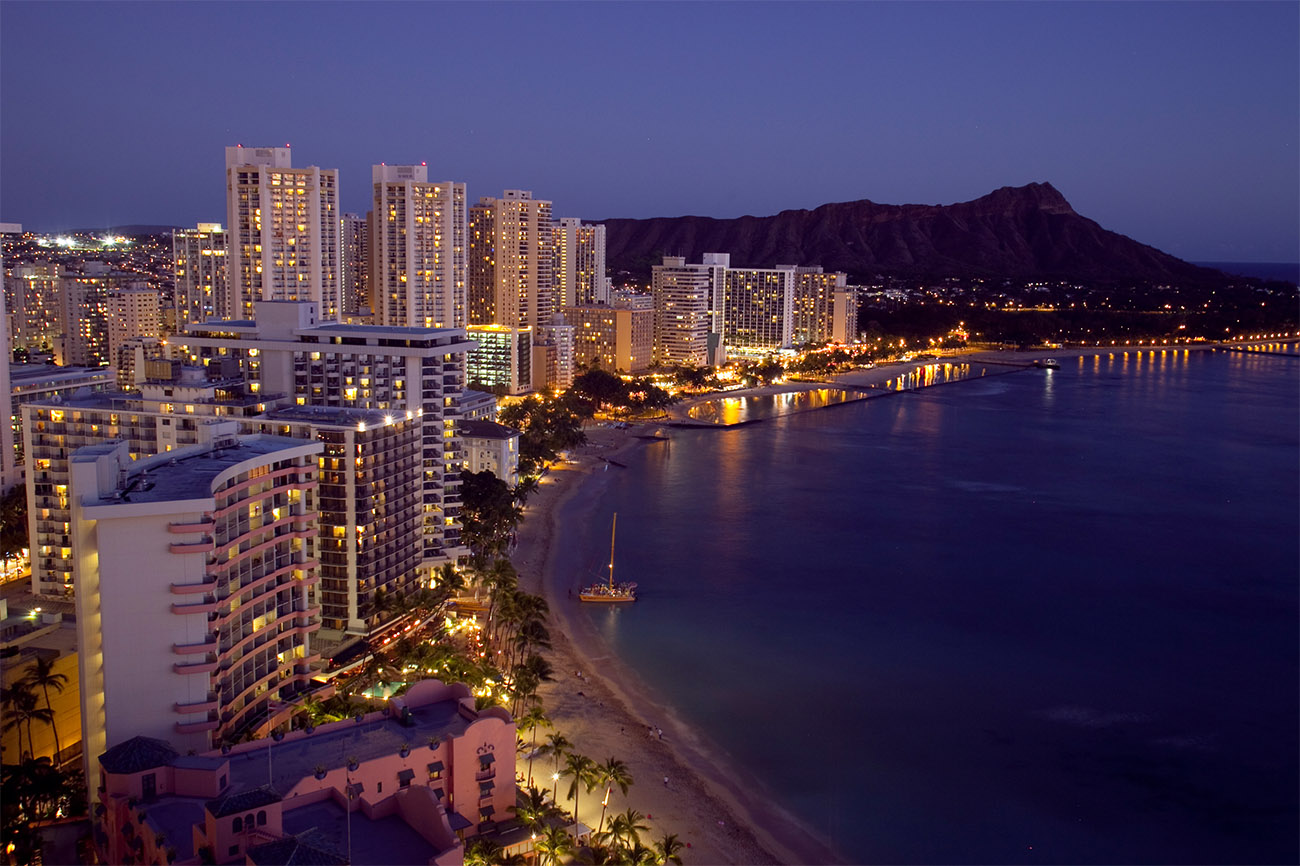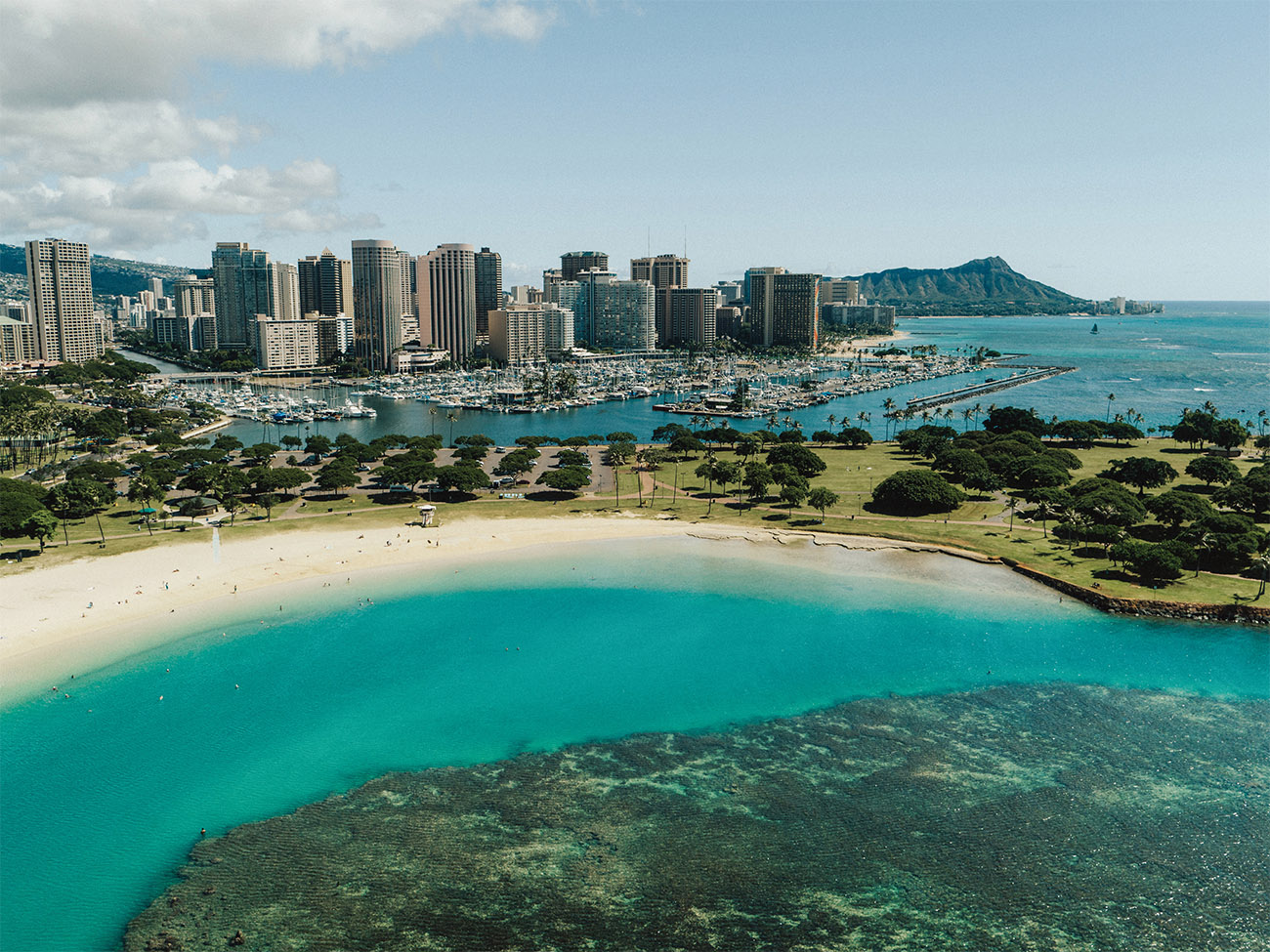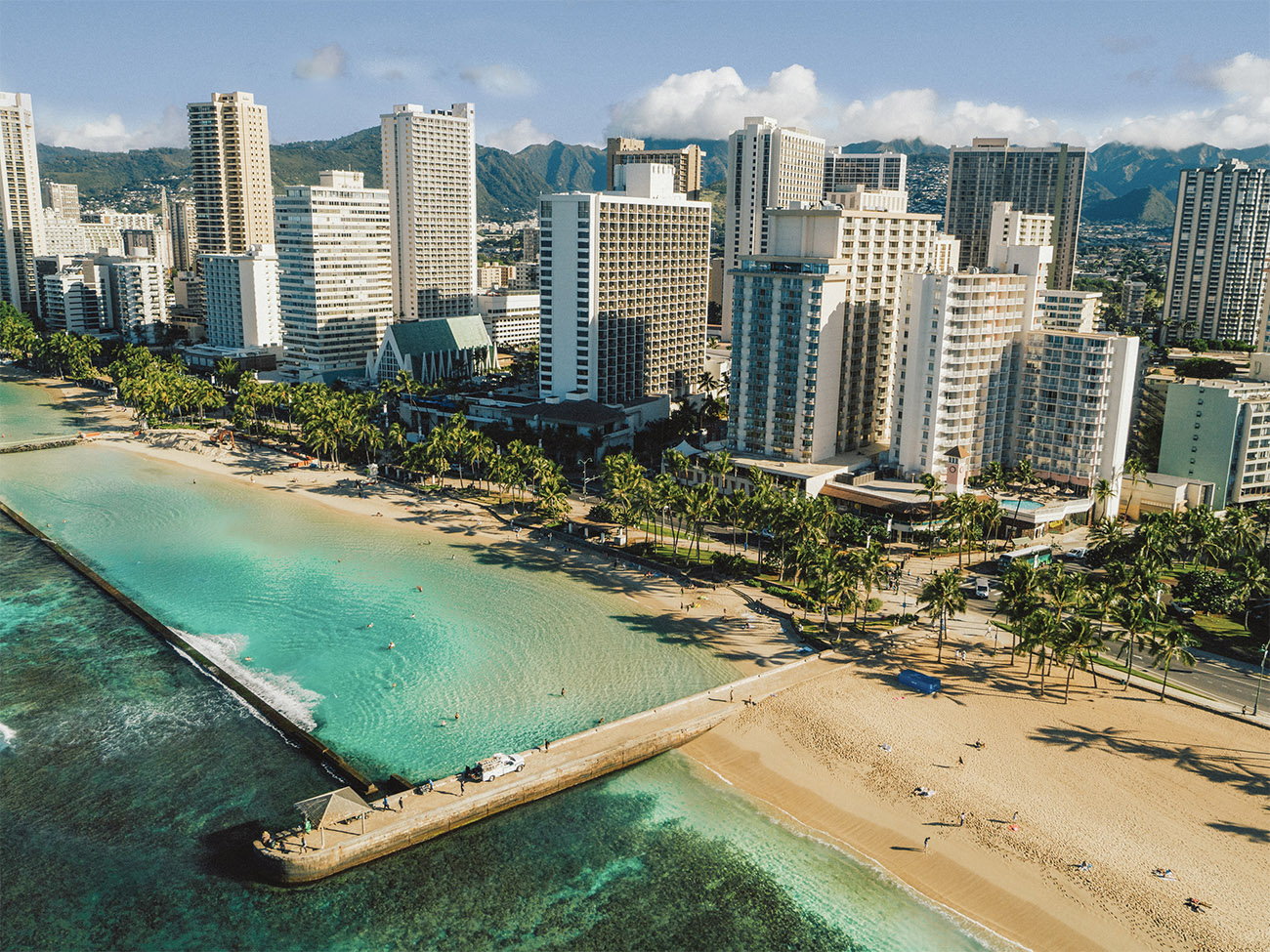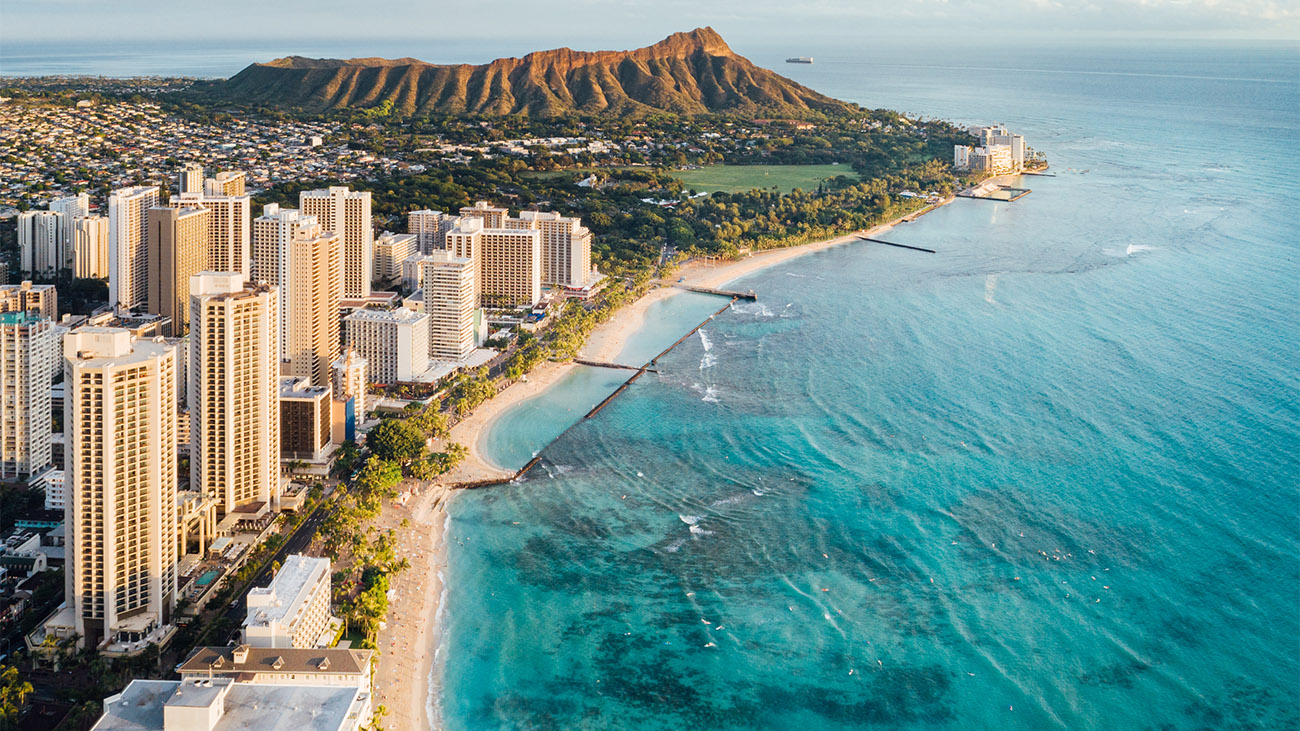Honolulu Through the Years
Listen to this article
Honolulu’s Waikīkī Beach has transformed over the past century from an agricultural area into an iconic travel destination. A commercial hub that rivals any of the world’s great city centers, this oceanside destination stands apart because of its unique historical and cultural background. Here’s a look back at the history of Waikīkī from the time of its first Polynesian settlers through today:

Courtesy Hawai‘i Tourism Authority (HTA)/Taku Miyazawa
Royal Location
Waikīkī translates as “fresh spouting waters,” after the mountain-fed springs that once emptied into the ocean along Waikīkī's coast. Gazing across the skyline towering with high-rises, it’s hard to imagine that at the turn of the 20th century the place was made up entirely of wetland taro patches. Waiwai doubles as the Hawaiian word for both plentiful fresh water and for wealth. A place of waiwai, Waikīkī's designation as a property of great economic value reaches into antiquity.
The vast network of taro and fishponds developed by early Polynesian voyagers who first settled on the land circa 600 A.D. was the site of a series of major altercations in the late 18th century. King Kamehameha the Great and his soldiers landed on Waikīkī’s shores and planned the Battle of 1795 against O‘ahu’s king. Upon their victory, Kamehameha housed the royal court in Waikīkī.
Over the years, the beauty of the ocean and harvest riches attracted subsequent ali‘i, or royalty, to build seasonal homes in the area. A vestige of royal presence lives on in street names, like main thoroughfare Kalākaua Avenue, in honor of the last king of Hawai‘i. (Kalākaua’s home, Iolani Palace, which dates to 1882, is now a National Historic Landmark that’s open to the public for tours.)
In Captain Cook’s Footsteps
The Waikīkī we know today got a momentous boost from the Great Mahele of 1848, which made land available for ownership by individuals. Foreigners had frequented the shores with whaling and commerce ships ever since 1778, when Captain Cook became the first European to reach Hawai‘i. Now, they began eyeing the area as a place to settle down.
In 1860, the first road into Waikīkī was built followed by construction of a tramway, giving visitors increased access. Asian plantation workers soon introduced rice paddies and duck ponds, while small hotels and wealthy family homes cropped up. By the early 1900s larger resort hotels were underway.
The single most dramatic change came with the construction of the Ala Wai drainage canal in the 1920s, marking the northern boundary of Waikīkī. The land dredged from the canal filled in the marshy areas, providing more surface area for prime ocean-view real estate. High-rises cropped up across the landscape by the latter half of the century, and steamships gave way to a steady schedule of commercial flights. Tourism boomed.
Elvis Was Here
Word of the island paradise spread when a military presence arrived with the defense station Fort DeRussy at the westernmost end — now a park. Significant scenes in Elvis Presley’s 1961 movie Blue Hawaii prominently featured Waikīkī, drawing yet more attention to the increasingly alluring vacation destination. More recently, movies and TV series like Hawaii Five-0 featuring scenes filmed in Waikīkī, continued to attract fans to its azure shores.
Modern surfing was also born in Waikīkī, garnering further publicity. Legendary waterman — and local native son — Duke Kahanamoku set swimming records at four separate Olympics in the first half of the 20th century and introduced the ancient Hawaiian art to the admiring ocean-loving community worldwide. His statue at Kūhiō Beach has become one of the most prominent landmarks in Waikīkī.
Kahanamoku and his friends became known as the Waikīkī Beach Boys as ambassadors of aloha, who would take visitors out on canoes or teach them to surf. Today, the Beach Boys offer surfboard rentals and lessons at their beach kiosks.
Another military base also opened at the eastern end of Waikīkī, inside Lē‘ahi crater where wetlands and waterfowl once thrived. Now known as Diamond Head, flocks of visitors trek the steep path to its summit.

Courtesy Hawai‘i Tourism Authority (HTA)
Waikīkī Today
At Diamond Head’s western base is Kapi‘olani Park, named after King Kalākaua’s queen consort, spreading its lush lawns across 200 acres. The plot once served as a horse racing track before transitioning into a park that includes the Honolulu Zoo and outdoor concert venue Waikīkī Shell. Across from the zoo is Waikīkī Aquarium. Established in 1904, it holds the distinction as the second-oldest aquarium still in operation in the United States.
You can still see remnants and tributes to historical Waikīkī, whether in the thriving surf sport that has continued uninterrupted on its shores for generations, or in the consumption of taro. The sweet root vegetable remains a popular nutrient-dense dietary item. When mashed with water it makes poi, a traditional dish that visitors will likely encounter during their stay in Waikīkī.

Courtesy Hawai‘i Tourism Authority (HTA)
Commercial Hub
At one end of Waikīkī is the Hawai‘i Convention Center, which hosts conferences and expos, like world-renowned anime fest Kawaii Kon. And bursting with activity throughout Waikīkī are an abundance of boutiques, restaurants, pubs, and cultural attractions.* Luxury Row, along the western stretch of Waikīkī, sports designer shops, while International Market Place presents a nightly hula show and living history performance in its courtyard. Amid the myriad dining options and stores that make up Royal Hawaiian Center is the Royal Grove, where daily lessons include hula, ukulele, and lei-making instruction.
Waikīkī still sits apart from its surroundings thanks to Ala Wai canal. The exclusive lands that kings and queens once called home continue to be some of the most coveted real estate in the Islands — and one of the crown jewels of Hawai‘i tourism.


